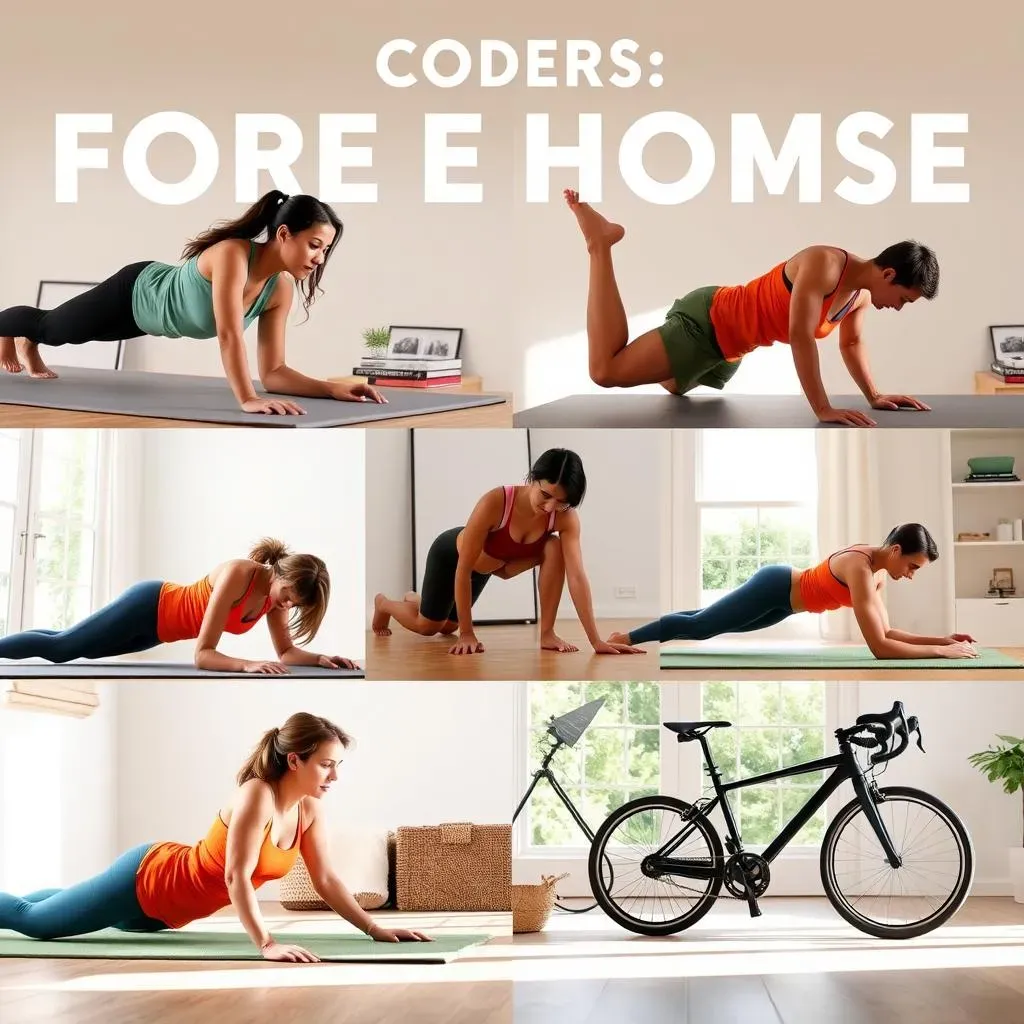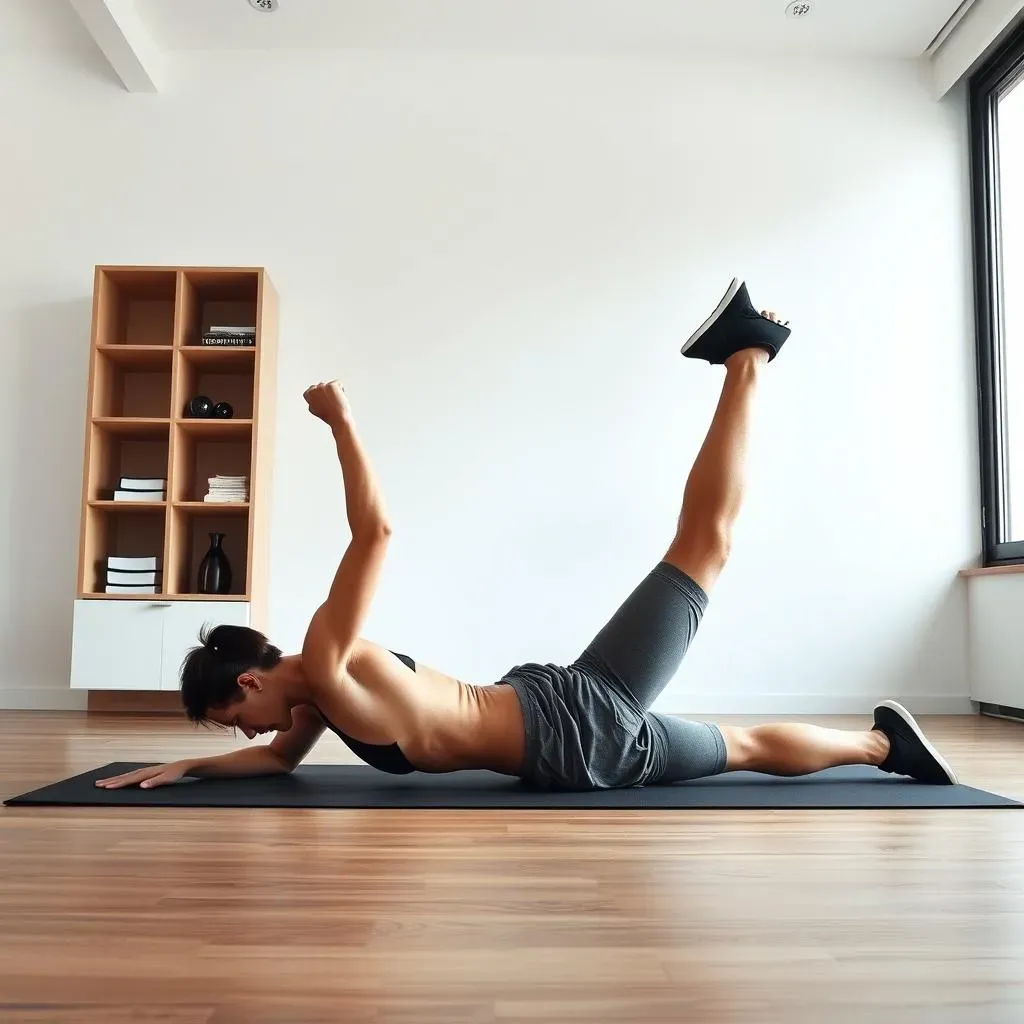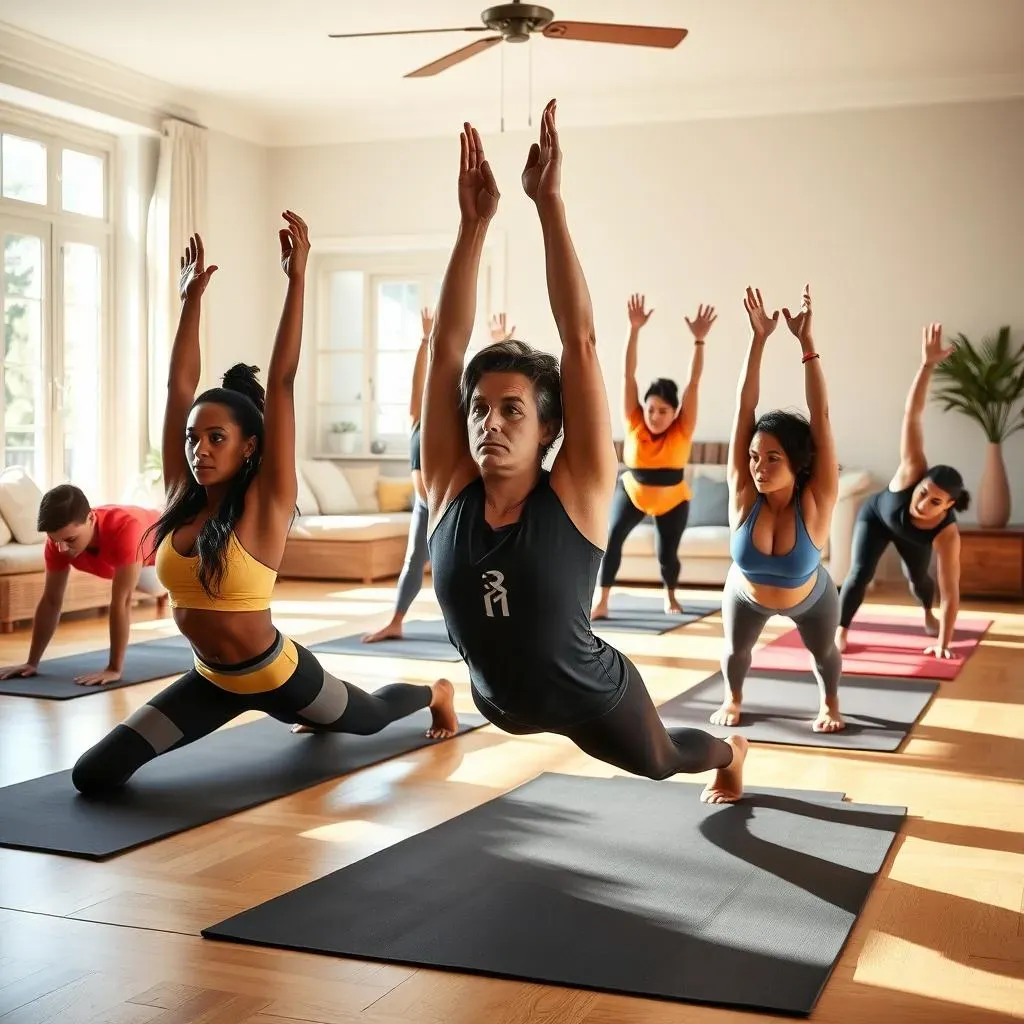Table of Contents
Ever feel like you're constantly battling a case of the slump? You're not alone. Many of us spend our days hunched over desks, phones, or steering wheels, leading to poor posture and a weak core. But what if I told you that you can fight back and improve your posture without needing a gym? That's where core workouts at home for posture come in. A strong core is like the foundation of a house. If it's weak, everything else suffers. In this article, we'll explore how your core affects your posture, what causes those annoying misalignments, and how to spot the signs of poor posture. Then, we'll jump into five simple yet powerful core exercises you can do right in your living room. We will also touch on how to deal with posture pain and what to do to improve your core with a workout at home. Get ready to stand taller, feel stronger, and ditch that slouch for good!
Why Your Posture Needs a Core Workout at Home

Why Your Posture Needs a Core Workout at Home
The Core: More Than Just Abs
Let's face it, when most people think "core," they picture a six-pack. But your core is so much more than that. It's like the central support system for your whole body. Think of it as a muscular corset wrapping around your torso, including your abs, back, and pelvic muscles. These muscles are key for keeping you upright, balanced, and moving smoothly. When your core is weak, it's like trying to build a house on a shaky foundation. Things just won't line up right, and that's where posture problems start to creep in.
The Posture-Core Connection
So, how does a weak core mess with your posture? Well, when your core muscles aren't strong enough to support your spine, your body starts to compensate. You might find yourself slouching forward, rounding your shoulders, or tilting your pelvis. These adjustments might feel comfy in the short term, but over time, they can cause muscle imbalances and put extra stress on your joints and spine. The result? Back pain, neck stiffness, and a whole host of other issues. It is not ideal, right?
Problem | Result |
|---|---|
Weak Core | Poor Posture, Slouching |
Poor Posture | Muscle Imbalances, Back Pain |
Muscle Imbalances | Joint Stress, Neck Stiffness |
Everyday Culprits of Bad Posture
Now, it's not always our fault. Modern life is basically a posture-killing machine. Think about how much time you spend sitting – at your desk, in your car, on the couch. These prolonged periods of sitting can weaken your core and tighten your hip flexors, pulling your body out of alignment. Add to that the constant hunching over our phones and computers, and it's no wonder so many of us struggle with poor posture. It's a perfect storm of bad habits, but the good news is, it's something we can definitely change with the right core workouts at home.
Simple Core Exercises for Better Posture at Home

Simple Core Exercises for Better Posture at Home
The Power of Bodyweight
Okay, so you're ready to build a core that could support a skyscraper? Awesome! The great news is, you don't need fancy equipment or a gym membership. We are going to focus on bodyweight exercises. These are super effective and you can do them practically anywhere. Think of your body as your own personal gym, always available and ready to go. These moves will target the deep core muscles that act as your body's natural corset, helping you stand taller and feel stronger. It's all about engaging the right muscles and doing the exercises correctly, not about how many reps you can crank out.
We're talking about exercises that are not only effective but also easy to learn. No complicated moves, no confusing instructions, just straightforward exercises that will make a huge difference in your posture. We are going to go through each one step by step, so you can get started right away. These movements are designed to be done at your own pace, so listen to your body, focus on the form, and get ready to feel the burn! It's about quality over quantity, always.
Five Moves to a Stronger Core
Alright, let’s get down to business. Here are five simple yet powerful core exercises that you can do at home to improve your posture. These are my go-to moves, and they've made a world of difference for me. We’ll start with the Forearm Plank, which is like the king of core exercises for posture. Then we'll move to Glute Bridges, which target your glutes and lower back. Next up, we have the Bird Dog, a great move for balance and stability. Following that, we'll do the Dead Bug, a fun exercise that works your core without straining your back. Finally, we'll finish with Bicycle Crunches, a classic move that targets your obliques. These five are a perfect combination for a full-body core workout.
The best part is that you can do these exercises anytime, anywhere. No excuses! Whether it's during your lunch break, before bed, or first thing in the morning, just find a few minutes to squeeze them in. Consistency is key when building a strong core and improving posture. These exercises will not only help you stand taller, but they'll also improve your balance, reduce back pain, and make you feel more confident in your own skin. So, let's get started!
Exercise | Primary Benefit | Why it Helps Posture |
|---|---|---|
Forearm Plank | Full core engagement | Strengthens core for upright support |
Glute Bridges | Glute and lower back activation | Improves pelvic stability |
Bird Dog | Balance and stability | Enhances spinal alignment |
Dead Bug | Core strength and coordination | Promotes core stability without back strain |
Bicycle Crunches | Oblique engagement | Strengthens core for better posture |
Home Core Workouts: Fixing Posture Pain

Home Core Workouts: Fixing Posture Pain
Understanding the Pain Connection
Okay, let's talk about pain. If you're like most people, you probably started looking into core workouts at home for posture because you're already feeling some aches and pains. Back pain, neck stiffness, shoulder tension – these are all common complaints that can stem from poor posture and a weak core. It's like your body is sending you a distress signal, saying, "Hey, I need some support here!" Ignoring these signals is like ignoring a leaky faucet. It might not seem like a big deal at first, but eventually, it can lead to bigger problems. So, it's super important to listen to what your body is telling you and take steps to address the root cause of the pain.
The cool thing is that you're not stuck with the pain. Home core workouts can be a game-changer for people dealing with posture-related discomfort. Strengthening your core can help alleviate the stress on your spine and joints, reducing pain and improving overall comfort. It's like giving your body the support it needs to function properly. You'll be surprised at how much better you can feel with consistent core training.
How Core Strength Eases Discomfort
Now, you might be wondering, "How exactly do core workouts help with pain?" The answer is pretty simple: by building a strong core, you create a natural support system for your spine. When your core muscles are strong, they can better stabilize your spine, reducing the load on your back and joints. This, in turn, can alleviate pain and improve your overall posture. It's like building a strong foundation for a house – everything else just falls into place. Think of your core as the anchor that keeps your body upright and stable. When that anchor is strong, you can stand taller, move more freely, and feel less pain.
Also, strengthening your core can help correct muscle imbalances. When some muscles are weak and others are tight, it leads to poor posture and pain. Core workouts can help balance these muscles, leading to better alignment and reduced discomfort. It's like fine-tuning an instrument – when all the parts are working together, the music sounds much better. Your body is the same way.
It is not about just doing endless crunches, it is about working the right muscles and doing the exercises correctly. We're talking about a comprehensive approach to core training that addresses all the muscles involved in maintaining good posture, not just the superficial ones.
Pain Area | Connection to Core Weakness | How Core Workouts Help |
|---|---|---|
Lower Back | Lack of support for the spine | Strengthens core to stabilize spine |
Neck | Compensation for weak core | Improves posture to reduce strain |
Shoulders | Slouching due to core weakness | Corrects posture to align shoulders |
Starting Your Pain Relief Journey
Starting your home core workout journey to fix pain doesn't need to be hard. The key is to start slow, listen to your body, and gradually increase the intensity and duration of your workouts. You don't need to do hours of exercises every day. Even a few minutes of focused core training can make a huge difference. It is about consistency rather than intensity.
If you're experiencing significant pain, it's always a good idea to consult with a healthcare professional or physical therapist before starting any new exercise program. They can help you identify any underlying issues and recommend a workout plan that's safe and effective for you. They can also give you specific advice about how to do the exercises correctly to avoid injury. Think of them as your personal guides on your journey to a pain-free life.
Remember, it's not just about fixing the pain, it's about building a stronger, healthier body that can support you for years to come. It is about making a long-term investment in your well-being and taking charge of your health. So, get started, stay consistent, and enjoy the journey! You've got this!
The Best Core Workout At Home for a Stronger Posture

The Best Core Workout At Home for a Stronger Posture
Crafting Your Core Routine
Okay, so we've talked about why a strong core is crucial for good posture and how to fix posture-related pain. Now, let's get down to the nitty-gritty of creating the best core workout at home for a stronger posture. It's not just about randomly doing a few crunches here and there. It's about creating a balanced routine that works all the muscles in your core, including your abs, back, and obliques. Think of it like a recipe – you need the right ingredients in the right amounts to get the best result. Your routine should include a mix of exercises that challenge your core from different angles, ensuring you're hitting all the muscles you need for good posture.
Your goal should be to make this a sustainable habit, something you can easily fit into your daily routine. It's not about doing a crazy workout once a week and then forgetting about it. It's about building a consistent practice that will gradually strengthen your core and improve your posture over time. Remember, this is a journey, not a race. You don't have to be perfect, just consistent. Focus on mastering the basics, and then gradually increase the intensity and difficulty as you get stronger.
Putting It All Together
So, what does the best core workout at home for a stronger posture actually look like? Well, it's going to be a mix of those five exercises we talked about earlier: the Forearm Plank, Glute Bridges, Bird Dog, Dead Bug, and Bicycle Crunches. These moves will target different areas of your core and help you build a well-rounded strength. The key is to focus on proper form, not just speed or quantity. It's better to do fewer reps with good form than a bunch of reps with bad form. It's like learning a new instrument – you need to practice the right way to become proficient.
Start with a warm-up, maybe some light cardio like jogging in place, and then move into your core exercises. Do each exercise for a set amount of time or reps, depending on your fitness level. Remember to listen to your body and take breaks when you need to. It's okay to start slow and gradually increase the intensity and duration as you get stronger. The main thing is to be consistent and make this a regular part of your routine. Aim for at least three times a week, and you'll start to see a difference. It is about making a commitment to your health.
Beyond the Workout: Lifestyle Tips
Now, while core workouts are super important, it's not the only thing you need to focus on. Your lifestyle plays a big part in your posture. Things like sitting habits, how you stand, and even how you sleep can affect your posture and core strength. So, it's important to be mindful of these things and make changes where necessary. It's like trying to grow a plant – you need the right soil, sunlight, and water to make it thrive. Your body is the same way.
For example, try to take frequent breaks from sitting and move around. Set up your workspace in a way that promotes good posture, and try to be aware of your posture throughout the day. It's also important to get enough sleep and manage stress, as these things can affect your muscle tension and posture. It is about taking a holistic approach to your health. It is not just about doing the exercises, but also about making conscious choices that support your posture and overall well-being. Remember, it's about creating a sustainable, healthy lifestyle that supports your core and posture long term.
- Mindful Movement: Take frequent breaks from sitting, and walk around.
- Ergonomic Setup: Adjust your workspace to promote good posture.
- Sleep Well: Ensure you're getting enough sleep, as it impacts muscle tension.
- Stress Management: Find ways to manage stress, as it can affect your posture.
